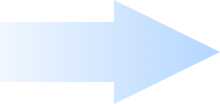Introduction
Modern power electronics depend heavily on DC/AC converters because they make it possible to convert DC sources to AC, which is the norm for the majority of electrical applications. These converters are crucial for a number of applications, including motor drives, uninterruptible power sources, electric cars, and renewable energy systems.
The basic categories of DC/AC converters, including single-phase and three-phase inverters, are discussed in this chapter along with cutting-edge modulation methods including pulse width modulation (PWM) and space vector modulation (SVM). The main parts such as circuit topologies, modes of operation, pulse-width modulation (PWM) strategies, and performance metrics of these converters are all covered in this chapter. We also go through design considerations, the impact of distortion and harmonics on converter performance, and real-world applications.
There are two types of inverters- Voltage source inverters (VSI) and current source inverters (CSI). In VSIs, the desired AC output voltage waveform is produced by the inverter while the input DC voltage remains constant. However, the desired AC output current waveform is produced by CSIs, which use a constant input current. Since, VSIs and CSIs are duals, it is possible to understand how they function by comparing their respective dualities in voltages and currents. First, we go through the fundamentals of VSIs.


直接登录
创建新帐号